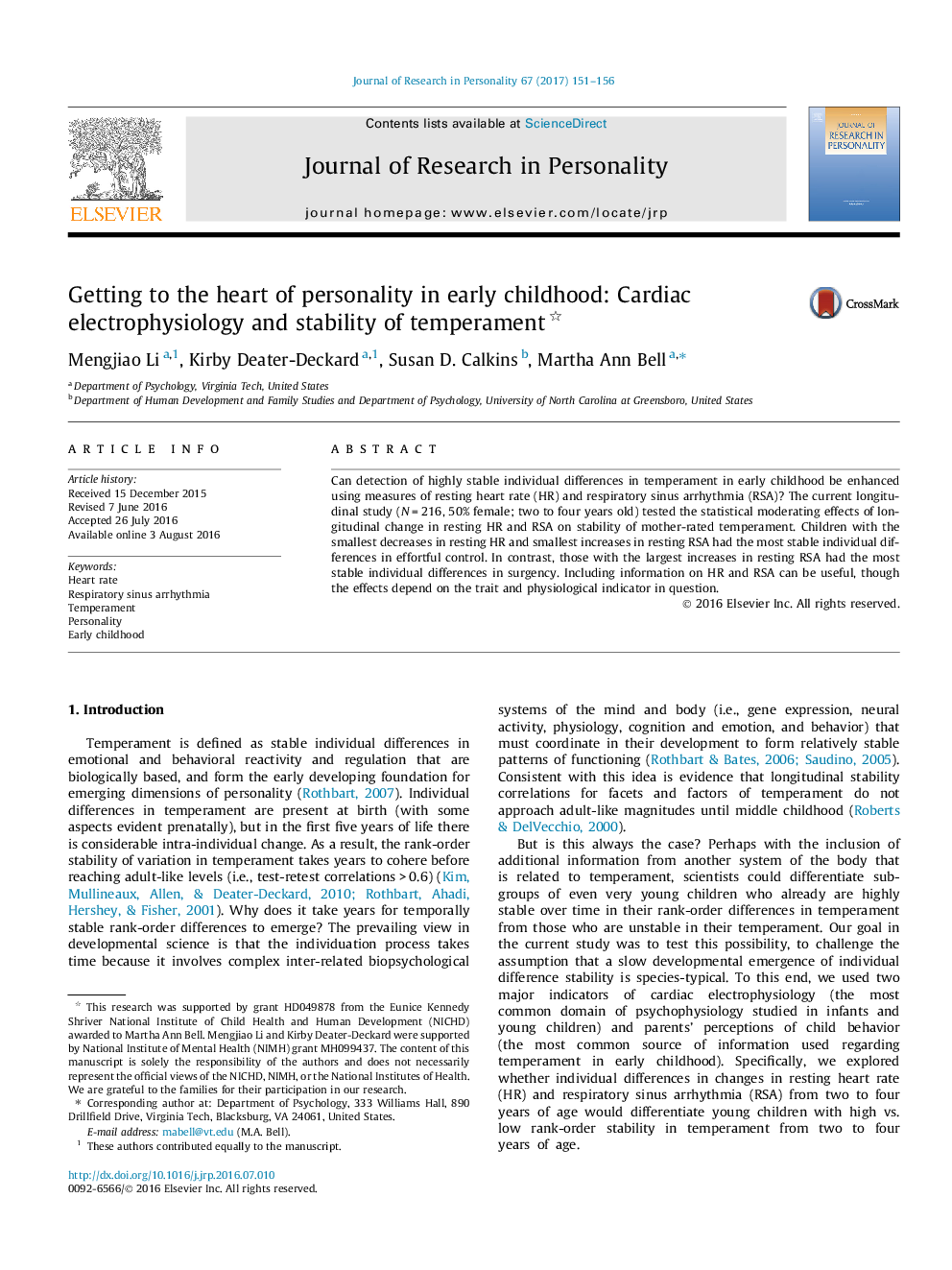| Article ID | Journal | Published Year | Pages | File Type |
|---|---|---|---|---|
| 5046214 | Journal of Research in Personality | 2017 | 6 Pages |
â¢Temperament is linked with heart rate (HR) and respiratory sinus arrhythmia (RSA).â¢Stability of effortful control from 2 to 4 years is greatest when HR/RSA change is modest.â¢Stability of surgency from 2 to 4 years is greatest when RSA change is substantial.â¢HR and RSA profiles distinguish stable from unstable traits in early childhood.
Can detection of highly stable individual differences in temperament in early childhood be enhanced using measures of resting heart rate (HR) and respiratory sinus arrhythmia (RSA)? The current longitudinal study (NÂ =Â 216, 50% female; two to four years old) tested the statistical moderating effects of longitudinal change in resting HR and RSA on stability of mother-rated temperament. Children with the smallest decreases in resting HR and smallest increases in resting RSA had the most stable individual differences in effortful control. In contrast, those with the largest increases in resting RSA had the most stable individual differences in surgency. Including information on HR and RSA can be useful, though the effects depend on the trait and physiological indicator in question.
